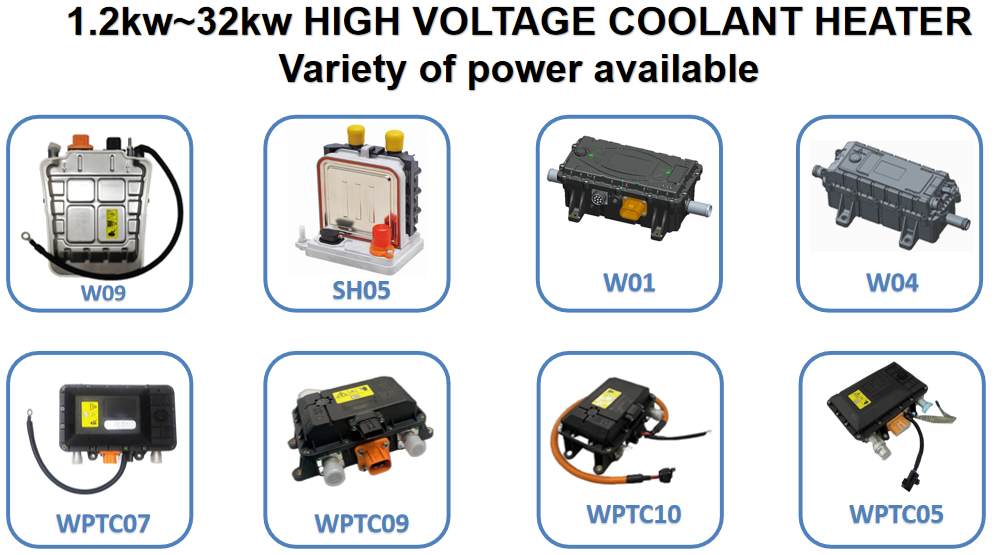Because the engines of hybrid electric vehicles and electric vehicles need to run frequently in the high efficiency area, when the engine cannot be used as a heat source under the pure electric drive, the vehicle will have no heat source. Especially for the temperature regulation of the cab, additional heat sources are required to ensure comfort and safety. In order to maximize the driving range of electric drive and improve fuel efficiency, it is necessary to generate heat quickly, efficiently and safely with the least power consumption of the traction battery. Our company has developed a new type of high-voltage heater based on new thermosphere technology.
1 Function and purpose of vehicle heating
Cab heating is an important function to ensure safe and comfortable driving of the vehicle. In addition to the comfort of the cab and the temperature inside the vehicle, the air conditioning system (HVAC) must also ensure certain functions including meeting regulatory requirements. For example, according to European Regulation 672/2010 and the US Federal Motor Vehicle Safety Standard FMVSS103, more than 80% of the ice on the windshield must be removed after 20 minutes. Defrosting and dehumidification are two other functions required by laws and regulations. Good temperature regulation of the cab is the basis of comfort and safety, which is also an important factor to ensure that driving is not affected.
2 Performance index
The main requirements for the heater depend on the use of the vehicle. The following factors are summarized:
(1) The highest efficiency;
(2) Low or reasonable cost;
(3) Fast reaction time and good controllability;
(4) The package size shall be minimized and the weight shall be light;
(5) Good reliability;
(6) Good sustainability and environmental protection.
3 Heating concept
In general, the concept of heat can be divided into primary heat source and secondary heat source. The main heat source is the heat source that can generate more than 2kW of heat required for cab temperature regulation. The heat generated by the secondary heat source is below 2kW, which is usually directed to specific parts, such as seat heaters.
4 Air heater and water heating system
The heating system can be divided into two main categories, which depend on the heating realized by fuel heaters or electric heaters:
(1) The air heater directly heats the air, which can quickly raise the temperature of the cab;
(2) Water heaters that use coolant as a medium heat carrier can better distribute heat and integrate in HVAC.
In the past, fuel fired heaters were introduced into hybrid electric vehicles and electric vehicles, whose lower power consumption can make electric energy used for vehicle driving, rather than heating. Because using electric heaters in winter will shorten the electric driving range by about 50%, people usually choose the fuel heating method.
5 Electric heater concept
Prior to development, several existing and potential technologies, such as wire wound resistance or positive temperature coefficient (PTC) heating, were analyzed. Four major development objectives were evaluated and several potential technologies were compared against these objectives:
(1) In terms of efficiency, the new heater must be efficient, and it should be able to provide the required heat output within a wide range of coolant temperature and under all voltages;
(2) In terms of quality and size, the new heater must be as small and light as possible;
(3) In terms of usability and cost, the use of rare earth materials and Pb must be avoided, and the cost of new products must be competitive;
(4) In terms of safety, any electric shock hazard or scald accident must be prevented under all conditions.
In the existing concept of electric heater for automobiles, the most popular is the PTC heater which uses a resistor made of barium titanate (BaTiO3) with a positive temperature coefficient. For this reason, several details of its working principle are explained and compared with the layered heater developed according to the high-voltage heater HVH.
PTC elements have very obvious nonlinear characteristics. The resistance decreases at a lower temperature, and then increases sharply when the temperature rises. This characteristic causes a self limiting of the current when the voltage is applied.
Hebei Nanfeng Automobile Equipment Group Co., Ltd. can produce 1.2kw-32kw high-voltage electric heaters (HVCH, PTC HEATER) with new technology to meet the needs of various vehicles.
Post time: Jan-06-2023





